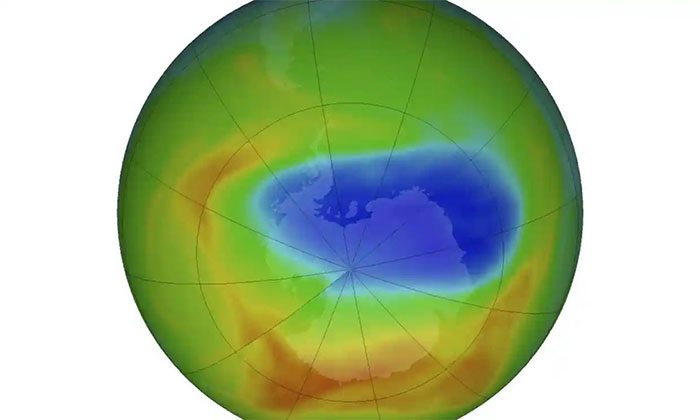The ozone hole over the Earth, once the most frightening environmental threat faced by humanity, is set to be “healed” completely across most of the world within the next two decades.
According to a new assessment by the United Nations, the ozone hole, which poses a risk of exposing people to harmful ultraviolet rays from the sun, is on track for full recovery by 2040 globally, except in polar regions, as reported by the Guardian.
The polar regions will take longer to recover, with the ozone layer expected to heal completely by 2045 in the Arctic and by 2066 in the Antarctic. According to AP, the ozone layer protecting the Earth is recovering slowly but significantly.

Map of the ozone hole in Antarctica on October 20, 2019. (Photo: AP).
Following alarms about ozone depletion in the 1980s, the atmospheric layer has gradually improved thanks to the 1989 Montreal Protocol. This international agreement has helped eliminate 99% of ozone-depleting chemicals, such as chlorofluorocarbons (CFCs).
Additionally, the United Nations noted that actions taken for the ozone layer have also spurred responses to the climate crisis.
CFCs are also greenhouse gases, and uncontrolled continued use of them could increase global temperatures by up to one degree Celsius by the middle of this century, exacerbating an already serious problem.
“Actions for the ozone layer have set a precedent for climate action,” said Petteri Taalas, Secretary-General of the World Meteorological Organization, on January 9.
Meanwhile, David Fahey, a scientist at the U.S. National Oceanic and Atmospheric Administration, commented that the challenges posed by greenhouse gases like carbon dioxide are even greater, as they persist in the atmosphere longer.
Unlike CFCs, which are produced by only a few companies, emissions from fossil fuels are much more widespread and are tied to most activities in society.
Furthermore, a recent United Nations report is the first to examine the potential impacts on the ozone layer of geoengineering methods.
This is an intervention in the climate where reflective particles, such as sulfur, are sprayed into the atmosphere to deflect sunlight and thus reduce global warming.
The report states that this controversial method has the potential to reduce global temperatures but could lead to “unforeseen consequences, including impacts on the ozone layer.”


















































